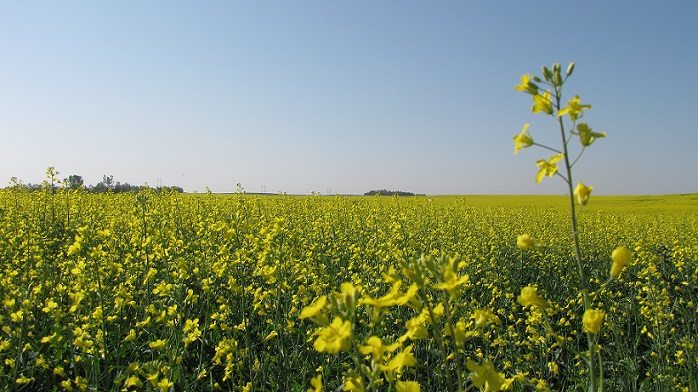First it was the heat that was propelling the 2021 growing season to the point that crops were advancing too quickly through their development stages. The extra heat also put crops and livestock at risk on the Prairies prompting Agriculture groups to seek provincial help.
The smoke from area wildfires and as well the fires burning in B.C. is covering the sky. Temperatures have now cooled off to the extent that it may have implications for the remainder of the growing season.
Agronomy Director for the Midwest, Clint Jurke with the Canola Council of Canada says this may be a good thing.
“That might be the one saving grace, because as the smoke is inhibiting the sunlight and the high temperatures from reaching the ground. That might be a little bit of the silver lining in the smoky cloud that we are facing.”
There are about 800 wildfires burning across Canada with some 171 in northern Saskatchewan and 68 in Alberta at this time.
Canola which is the cash crop for producers, does not like high temperatures. Jurke says the high temperatures that we have had this growing season is not really good for the canola flower.
“Once we get to temperatures above 25 Celsius, it has an impact upon yield. Once we’re above 30 Celsius then that impact becomes greater. The night-time temperatures are almost as important as the daytime highs. If we don’t have those night-time temperatures drop below 20 Celsius on a regular basis, then the plants don’t have an opportunity to recover.”
Jurke says it affects the way the pollen is made, the ability of the flowers to get fertilized and most importantly the development of the seeds that producers want at the end of the season.
Like everyone else, Jurke says farmers will welcome some rain.
“The biggest hurdle for producers right now is just the lack of moisture. We could withstand some of these higher temperatures, we could withstand this smoke, but the lack of rainfall and the persisting drying temperatures, right from the Red River Valley to the Peace River Valley, right across the Prairies.”
Jurke says farmers would relish a good widespread 25-30 millimetres of rain right about now.


